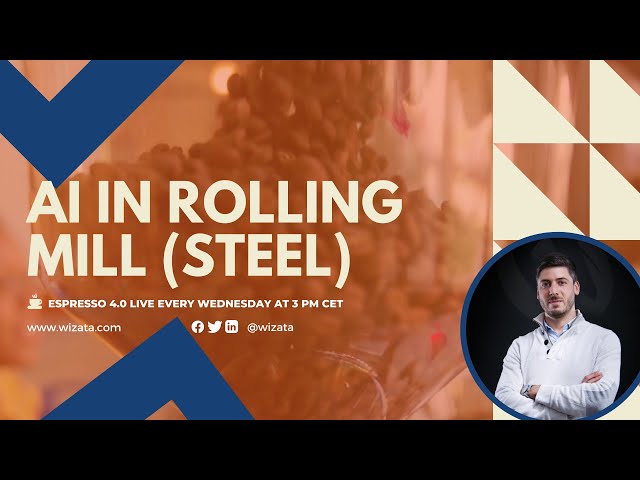![]() Espresso 4.0 by
Espresso 4.0 by
Wizata
The steel industry is one of the pillars of our society. Things are either made of steel or they are made by machines made of steel. And one of the most important parts of the steel manufacturing chain really is the rolling mill.
Speaking of the rolling mill and specific hot rolling, how important is it to get the data from the entire rolling process and visualize it?
Collecting and Visualizing the Data of the Rolling Process
Steel manufacturing includes the hot parts and cold parts of the process. The hot stage is used to preprocess and prepare the metal for the next phase, and the cold part is more to give properties to the steel required for the production that you target, as well as a surface coating.
It is in the interest to focus on the hot area since it is one of the regular steps in the chain of steel production, and some defects are already happening in this section, which is one of the very early stages.
So, when the defect occurs in the hot area because of some specific conditions, the defect can be even more elongated and prominent after subsequent rollings in the cold area.
For example, if you have a several centimeters scratch on the coil's surface, when you continue to roll, flatten and elongate this product, a small effect or a scratch that you had at the beginning can become meters long in the end.
These sections of the metallic product will have to be cut before sending it to the customers. Or even worse, they could be sent to the customer, who will promptly return it since it doesn’t match their quality requirements.
Detecting Small and Preventing Huge
In essence, the small problems you have in hot rolling can have huge consequences afterward. You want to detect them as early as possible, not only because of the quality but also because of the cost of processing.
Manipulating heat every time cost energy. Even in the cold area, we have to reheat the coil to process it correctly. You always need to reheat and put a lot of energy into that to break the structure, give new structure, and apply some specific coating or treatment.
So, if you know that you have a defect at the beginning, in a hot part, you know that this product doesn't need to go up to all the process stages, and you will save a lot of time and production costs. It is essential to know precisely what is happening in the hot area and ensure that you detect potential problems correctly.
Benefits of AI in Rolling Mills
Can we derive more benefits from this harvested data using some of the pillars of Industry 4.0 data science and artificial intelligence? If so, what are those benefits? Specifically, what value can we get from AI applied to this data?
The benefits of AI in the steel industry are quite clear: we can avoid these consequences in production, and we can achieve that in several ways. For example, we can detect any small potential issue by recognizing specific patterns in the data that humans cannot see or interpret. Sometimes it is something you can see, but you cannot look at the data constantly and point it out the moment it shows up.
So you also need an automated system that will recognize these situations and inform people that something's happening. The goal is that when something specific happens, you really want to detect and track this event to be able to trigger some corrective operations.
A corrective operation can be simply canceling the production of that specific item to avoid the operational cost that comes afterward, or it can be to give recommendations to people on what they could adjust in the next steps of the line to try and reduce the defect generated.
If you have scratches, you may apply more grinding space to make it more smooth and more polished, apply different coating settings, or have different heating conditions to correct the defect.
Getting New Insights
Speaking of the value we get from AI applied to the data coming from the rolling mill, is it possible that some of the machine learning techniques provide us with insights we were unaware of thus far that are affecting the quality of the product or the health of the asset?
Yes, that is happening quite often. We have two phases in this type of project. The first is where we blend the information with data science methods, so it comes up with everything outside of the ordinary or with some extreme conditions you need to relate to. This is why you need to interact with process teams, so they can explain exactly what is happening.
It could be something specific they are familiar with that needs to be removed from the data because it is not relevant to use. They can confirm some observations or see specific correlations between points that they know will lead to future problems or impact quality.
Also, they can find some data correlations that are not known yet. This often happens when we start to combine data from several pieces of equipment.
For example, if you work with a rolling mill, the rolling mill may not have any specific differences in how it works. But, if you look at the equipment in the line before, perhaps an oven that pre-heats the slab or the roller that performs the first flattening of the product, with the combined data from these components, you can avoid the specific conditions for your rolling mill.
You paint a larger picture that humans do not find easy to detect because you need to know what happens at all times in different sections of the production line to map a defect position when it appears on the coil's surface.



